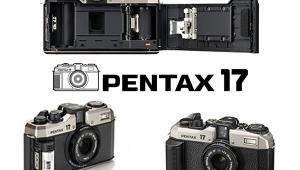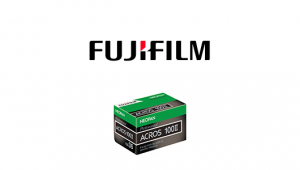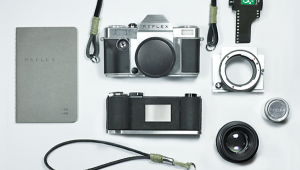photokina: Film & Film Cameras: Silver Halide…Still Gleaming?
Here’s another in our series of reports from photokina 2012. As you will have noticed we do not attempt to create a laundry list of new products and companies from the show, but prefer to report on what struck our eye and thought might be of special interest to Shutterbug readers. In this report Roger Hicks tells us about numerous instances of life in the film arena he found at the show, with special cameras, film, paper, and even processors part of the mix.—Editor
Long gone are the days when we could write separate articles about new film cameras, films, papers, and darkroom materials, but there was more than enough at photokina 2012 to justify a piece on all of them combined. Among the headlines for us were a new Rolleiflex TLR from DHW, successors to Franke & Heidecke; new 4x5” and 6x12cm cameras from Fotoman; Fotoman’s old 617, 624, and 810PS reintroduced; commemorative models from Linhof; a new 8x10” pinhole camera from Harman-Ilford-Walker; two new 11x14” cameras (Arca-Swiss and Shen Hao); one new black-and-white film from Adox; a new novelty color film from the same source; very clever new chemistry packaging from Maco; a new direct-reversal printing material from Harman-Ilford; new products from The Impossible Project; a new enlarger, and new paper washers from Kienzle; even a new film/paper processor from Jobo; and a new minilab, the Serengeti, for the African market (which is apparently still a growth market for silver halide). I mention the last only for completeness: check the website of AAA Imaging Solutions for details.
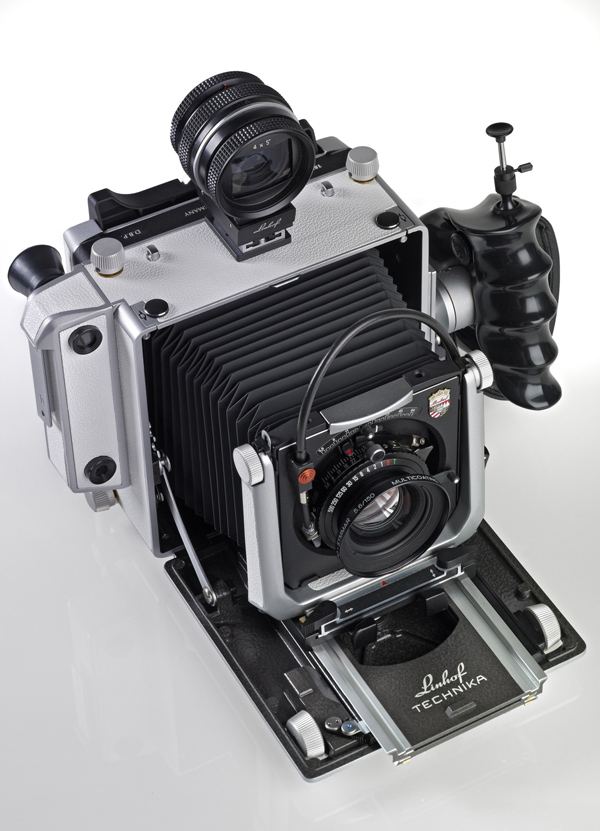
Courtesy of Linhof
And, although it’s not exactly news, it’s good to know that plenty of other companies are still supporting silver halide and were at the show. This includes Kodak, Fujifilm, and Foma as well as (for example) Kenro, who still make negative files, or Tetenal, who were there with their full lineup of processing chemicals.
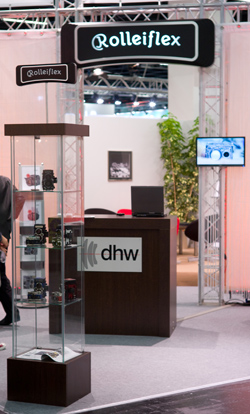
© Roger Hicks Ltd.
Film Cameras
Rollei TLRs are too well known to require much introduction, and the new 2.8 FX-N incorporates only minor changes: the S-Apogon 80mm f/2.8 now focuses down to 55cm (about 21”) instead of 1 meter and a certain amount of titanium has been used in the finish and trim; including, if I understood aright, the bayonet mounts around the lenses. The FX-N looks expensive, but it is one of the last all-mechanical top-flight cameras that should, with anything resembling normal care, last a lifetime. That should be true even if you’re in your teens now, and live to be 100.
Fotoman started out by making solid but rather crude panoramic cameras as well as 4x5” and 8x10” rigid-body cameras. When I say “crude,” they weren’t badly made, but they had the machine shop look of cameras that were built by an engineer who was more concerned with function than with elegance. While this is undoubtedly the right priority, it may also explain why the original company folded a few years ago, only to reappear at this year’s photokina.
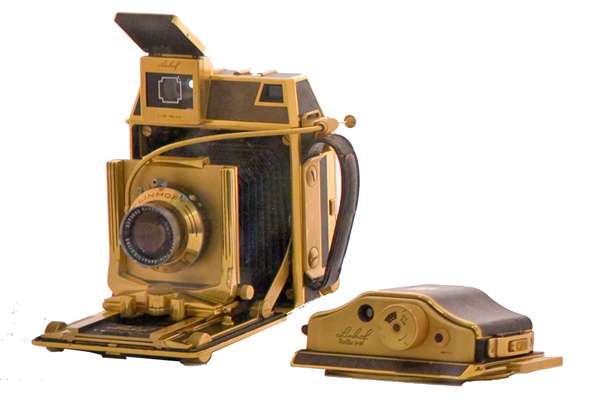
© Roger Hicks Ltd.
The new cameras are vastly more elegant, rather more cleverly designed, and a good deal more elegantly finished and ergonomic. Again, “elegantly finished” may create the wrong impression: the old machine shop/prototype look was well finished, but hardly elegant. There may even be those who prefer the older cameras, dismissing the new ones as smacking of frippery; but I have a low tolerance of frippery, and I prefer the new ones. For those who prefer the older models, they are once again available: the 617 and 624 panoramic cameras, 4-on-120 and 3-on-120, with red-window film advance and the 810PS point-and-shoot.
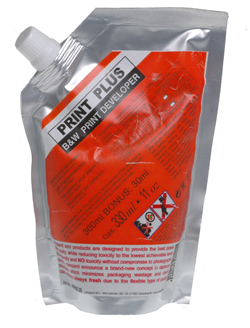
Photos © Roger Hicks Ltd.
Be that as it may, there are three cameras in the new lineup. The biggest is the 45SPS (Shift, Point, Shoot), which features +/- 20mm of rise/fall (40mm total) and a choice of lens cones (all lenses are in helical mounts) for lenses from 47mm to 150mm. The back is Graflok, and can be fitted with either a folding hood/screen protector or a rather bulky rigid “chimney”-style focusing ground-glass viewer. Because of the rigid construction, it is more suitable than most 4x5” cameras for use with digital backs, but I’d still be inclined to have the camera matched to the back.
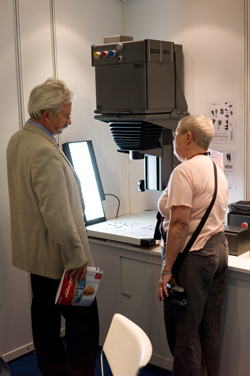
Digital users would in any case be better served by the Fotoman Dmax, which accepts film backs up to 6x12cm (Horseman) as well as a range of digital backs and provides +/- 25mm of shift (50mm total) and +/- 20mm of rise/fall (40mm total). Cones are available for 38mm to 300mm lenses, and six different back adapters are available for Horseman, Mamiya RB or RZ, and Hasselblad film backs and Hasselblad, Phase One, Leaf, Mamiya, and Contax digital backs; though I did not think to ask how one might advance the film on a Hasselblad film back. Although the body-plus-back-adapter approach (pioneered by Alpa) is more expensive than the old red-window Horseman backs, it’s also a lot more versatile; a good deal easier to use; and runs no risk of inadvertent light strike through the backing paper.
Finally, the Fotoman Dmini can take classic Hasselblad film backs and the same range of digital backs as the Dmax. It offers no movements, but on the other hand, the lens range is 23mm to 90mm.
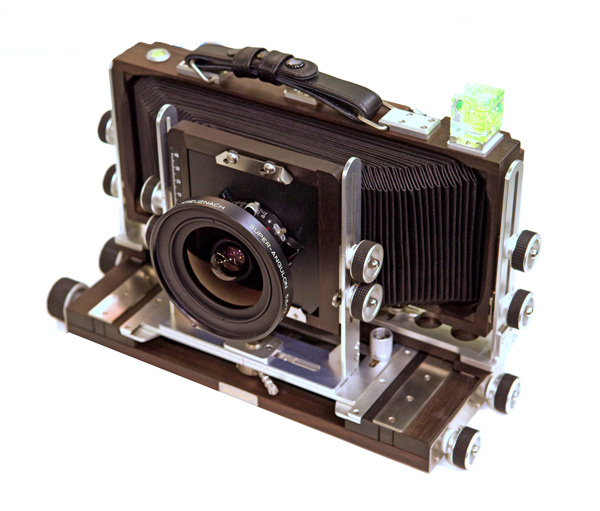
© Roger Hicks Ltd.
Going back to film cameras, Linhof was celebrating its 125th anniversary. An ancient gold-plated “baby” Technika glittered with more than oriental splendor, but the company’s wonderfully austere gray-and-black 125th anniversary models (a Technika and a 617) had not quite been finalized by the time of the show. They were not even entirely sure how many they were going to make, as demand was much greater than they had anticipated.
The Harman Titan 8x10 pinhole is pretty much what its name suggests, a scaled-up version of the 4x5” Harman Titan pinhole designed by Mike Walker. Delivery of the 8x10 has been delayed because of demand for the 4x5” version, of which they had sold 1440 in less than a year before photokina: a fairly impressive trick with a new 4x5” film camera. Still more impressively, one UK photography school had plans to replace one-quarter of their digital editing suite with a darkroom, because the head of the school reckoned the 8x10 was the ideal way to introduce students to silver halide! Interchangeable auxiliary cones are now available for the 4x5” pinhole, too, in different “focal lengths.”
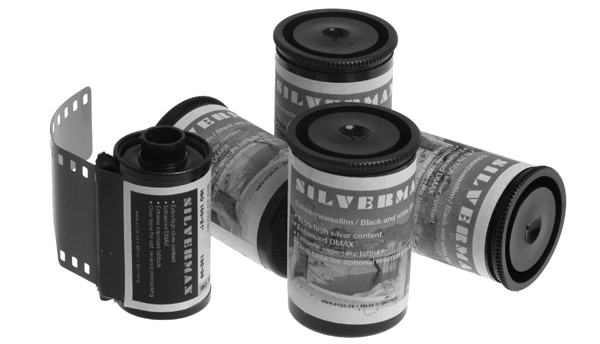
© Roger Hicks Ltd.
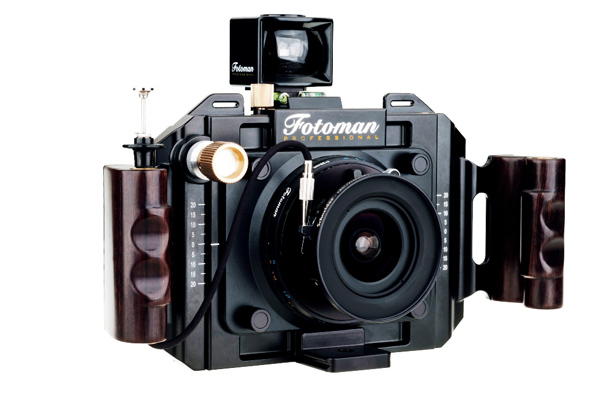
© Roger Hicks Ltd.
(Very) Large Format
Moving on to very large formats, one new 11x14” camera would have been a surprise, but two qualified as an astonishment. They were very, very different, too. The one I saw first was the Arca-Swiss LulF, a massive monorail with conventional cross, swing, and tilt movements, but all-indirect rise and fall in the interests of weight and bulk. For indirect movements, you tilt the base of the camera and then bring the front and rear standards into parallel. This is made much easier by an ingenious pendulum indicator on the side of each standard: hardly a new idea, but rather better executed and less likely to stick than the brass pendulums of 100+ years ago. Then again, this is typical of the precision with which Arca-Swiss cameras have always been made. At 6500 euros (call it $8500), you’d expect precision, though.
The Shen Hao was the second 11x14, a 10 kg (22 lb) wood-and-alloy field camera that folds up in the traditional fashion. The improvement in the quality of Shen Hao cameras over the years has been impressive, and this is well up to the best of their present quality. It’s huge and heavy, to be sure, but not as huge and heavy as the LulF. Shen Hao also showed some of their existing cameras in ebony; the 4x10” was particularly handsome.
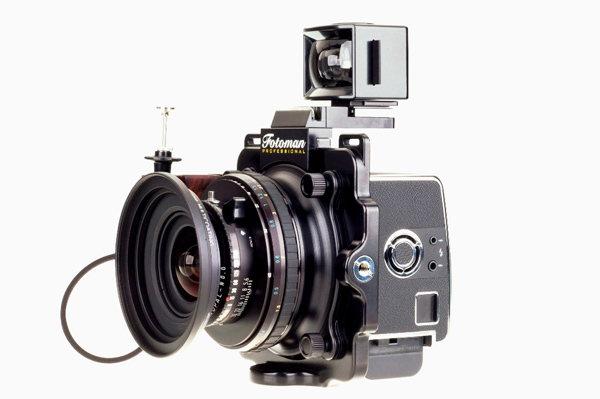
© Roger Hicks Ltd.
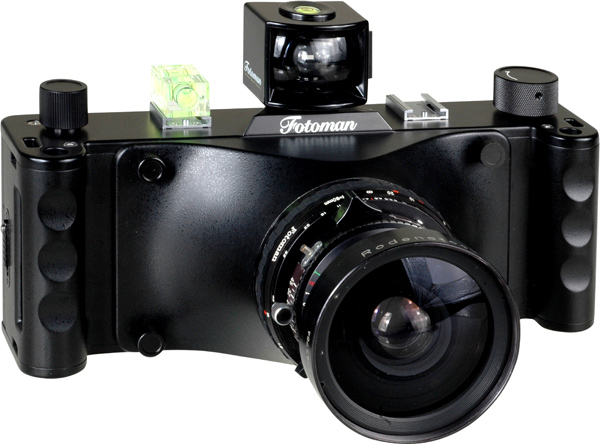
© Roger Hicks Ltd.

© Roger Hicks Ltd.
Film On Offer
Moving on to film itself, the new Adox Silvermax from Fotoimpex is an ISO 100 film which will, according to its distributor (who has a hand in the manufacture as well), be in production for a long time to come, i.e., it is not a short-run film that will no longer be available when stocks run out, as is increasingly often the case with “special” films. The intriguing thing about it is that it is on a clear base, which makes it especially suitable for reversal processing. This is certainly a niche within a niche, but reputedly, it also behaves extremely well as a conventional negative film. We were given a few rolls of 35mm to test (the only format which appears to be available), though our photokina deadline meant that we had not yet had time to do so before submitting this article. We were told that Freestyle would import it into the US.
The other new film, Color Implosion, also from Fotoimpex, is however a “fun” short-run film. It will probably still be available (again from Freestyle) when you read this, but when it’s gone, it’s gone. It’s C41-compatible and gives quite dramatically different colors according to how it is exposed (EI 100, 200, 400): the manufacturer claims “Imploding Colors, Bursting Red and Toxic Grain.” There may in the future be more and more films like this: short-run “fun” materials that do not pay much attention to traditional quality criteria but produce dramatic, sometimes unpredictable images in the tradition of Lomography.
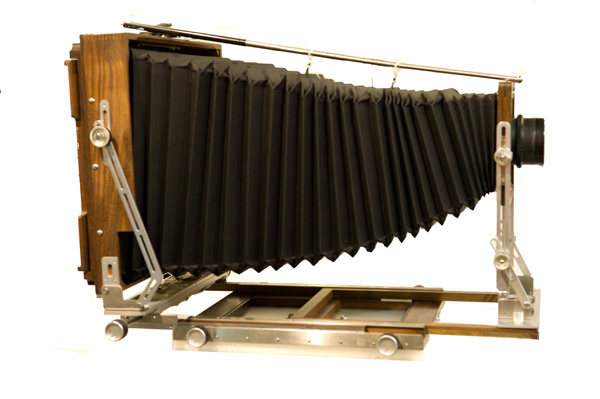
© Roger Hicks Ltd.
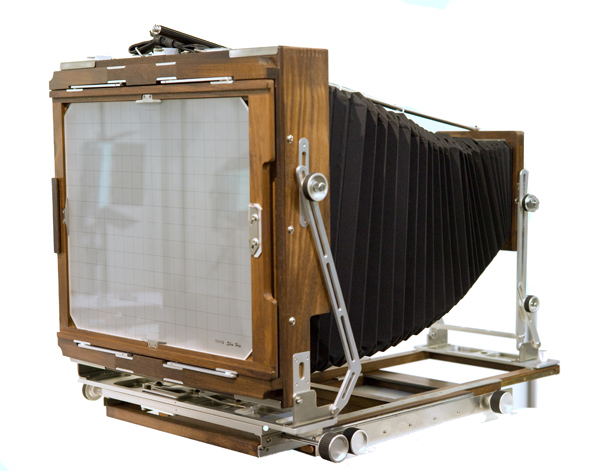
© Roger Hicks Ltd.
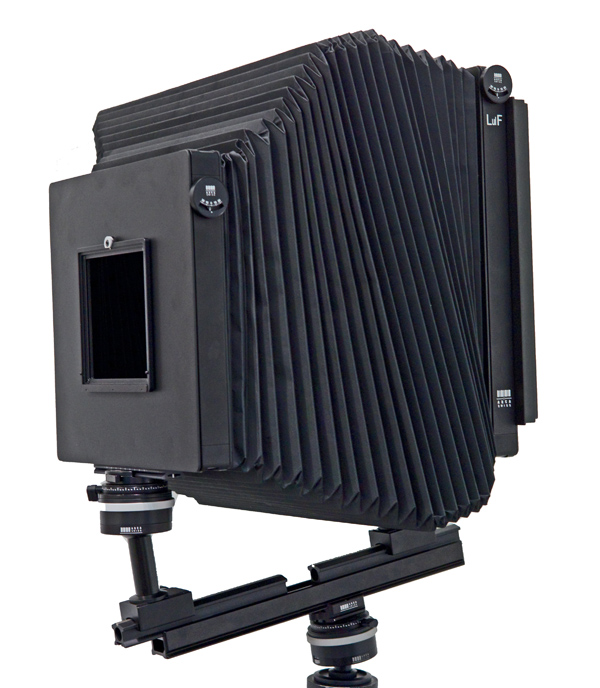
© Roger Hicks Ltd.
Maco/Rollei films are often in the “short run” and highly specialized category, and although they appeared to have no new films at the show, their new chemistry packaging is brilliant: small, collapsible, recyclable bottles, reminiscent of what you find inside a wine box, that should effectively banish oxidation. More and more of their chemicals will appear in this form. It is worth checking which of their products Freestyle is bringing in.
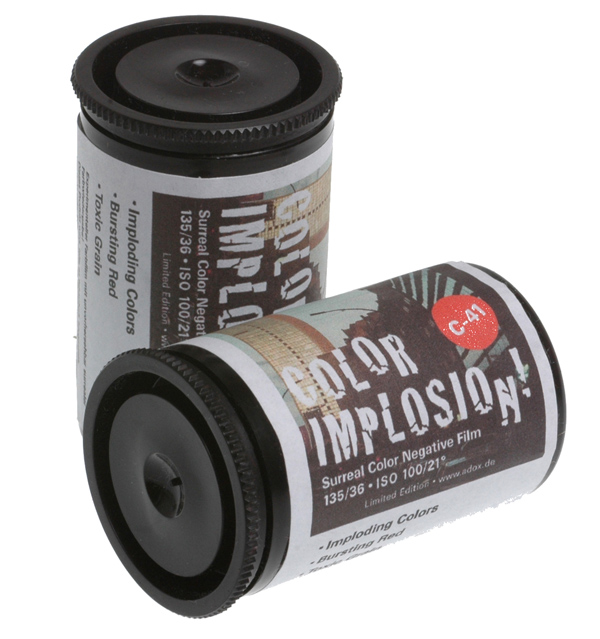
© Roger Hicks Ltd.
Harman Direct Positive Paper has already been reviewed in Shutterbug (August 2012) but at photokina Harman (manufacturer of Ilford films) also showed the same emulsion on a new polyester base. This gives a super-glossy effect rather akin to the old Cibachrome but, of course, in black and white. At the show, a question mark hung over continued production because it was even more expensive than the fiber-based version of the paper, purely because of the cost of the base. On the other hand, it gives very much more dramatic results than the same emulsion on the resin-coated base and is technically easier to coat. The question is whether people are prepared to pay the premium. Another possibility would be to drop both the conventional RC and the polyester and stick with the FB, which greatly outsells both of them. In September, Harman were ruminating on all these possibilities. Order some polyester base if you think you’d like it: it may encourage them.
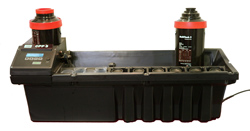
© Roger Hicks Ltd.
The Polaroid-technology-reviving The Impossible Project continues to improve their integral films, so that they now no longer have to be shaded during development, but they also appear to have mastered 8x10” peel-apart film, in a form that is fully compatible with Polaroid 8x10 backs and processors. The material is terrifyingly expensive, pushing $20 per exposure, but equally, it gives a unique look that you cannot achieve in any other way. They also showed prototypes of what, if I understood it correctly, amounted to a fixed-focus enlarger for making Impossible “Polaroids” from an iPhone.
Still on the subject of materials, in a way, Film Rescue International had a stand for the first time at photokina. They reckon that they can develop just about anything, though admittedly, they can develop color only in black and white. If you have ancient films lying around, though, it may be better to have them developed as black and white rather than throwing them out. When I say “ancient,” their display included (for example) black-and-white prints made from 1940s Kodachromes that they had recently developed. Black-and-white films are no problem, and they can even process films where the base has started to decay and is deformed.
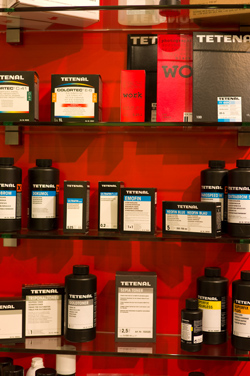
© Roger Hicks Ltd.
Darkroom Gear
Kienzle had a series of new enlargers in 6x9cm, 4x5”, 5x7”, and 8x10”: the C67/69, C120, C138, and C252. Although these are similar to the existing enlargers, and can be fitted with color, multigrade, halogen, cold light, or condenser heads, the real novelty is LED heads with red for focusing, and green and blue for split-grade printing: green is of course minus magenta, and blue is minus yellow, corresponding to the blue/green sensitivities of multigrade and other VC emulsions. They also announced that they will make five- and 10-slot print washers, with and without air injection, to order in any size, rather than locking buyers into “one size doesn’t quite fit all”—though in all fairness, they already offer six sizes from 24x30cm (effectively, 8x10”) to 80x110cm (washes up to about 30x40”). Kienzle kit is expensive, but when you handle it, you understand why.
Jobo showed their new CPE-3 tempered rotary processor for film and paper. Of course you can buy a secondhand CPE-2 for maybe a tenth as much as the new CPE-3 (it’s about $2500) but equally, the old CPE-2s are getting long in the tooth and won’t last forever, despite the fact that they can usually still be repaired. In the US, go to Ormer Hecht at CatLABS of JP for repairs: he will also be able to tell you where to buy new, but this hadn’t been finalized at photokina. As an aside, he also repairs all sorts of other darkroom equipment, including enlargers. The reappearance of a dedicated processor for film and paper argues very strongly that there is, indeed, a renewed interest in film.
Raising The Bar
As an aside here, Keith Canham (manufacturer of Canham cameras) told us at the show that whereas 4x5” used to be regarded as the “entry-level” size for large format, more and more novices are now going straight in at 8x10” and then in many cases working up to even bigger formats, up to and including 20x24”. Not only does Canham manufacture cameras in all these sizes: he is also the go-to supplier for specialized large format film sizes. As he says, “Within reason, if Kodak coat it, I can get it cut to the size you want—though minimum order quantities can be very high.”
Film “Not Quite Dead Yet”
Over the years, there have been numerous straws in the wind to indicate that film is not dead, and that indeed, it may be undergoing something of a renaissance. In all fairness, there have also been attempts to talk up film: not so much straws in the wind, as whistling in the dark. But it’s worth ending this brief entry on silver halide with three more comments on all this, to add to the new cameras, the story about the art school, the new materials, and the new darkroom equipment.
The first is that Harman (Ilford) recently bought their own cassette-making machine. Previously, they had bought cassettes. Then they decided that they would prefer to be free of reliance on an outside supplier. Cassette-making machines are big, expensive pieces of kit, and you can’t just pop down to the corner shop and pick one up. This looks to me like a very strong commitment to making film.
The other two are from Audrey Jonckheer at Kodak. First, she said that while Kodak’s consumer film sales were still declining significantly, professional film sales were stable or, at worst, declining slightly: the degree of decline is inside statistical error, so they can’t tell if there is a real decline or just a quarter-on-quarter variation. Second, she pointed out that film is the only thing that people get really passionate about. Threaten to take their Tri-X away, and the sky is falling. No one feels the same about inkjet printers, photo kiosks, or indeed anything else. Not even cameras: they buy new ones, or recycle old ones. But film… Film is special.
To contact any of the manufacturers listed in this article simply type the boldfaced names into a Search engine and you will be brought to their site. If you have any difficulty contact us at editorial@shutterbug.com and we will do our best to connect you.—Editor

